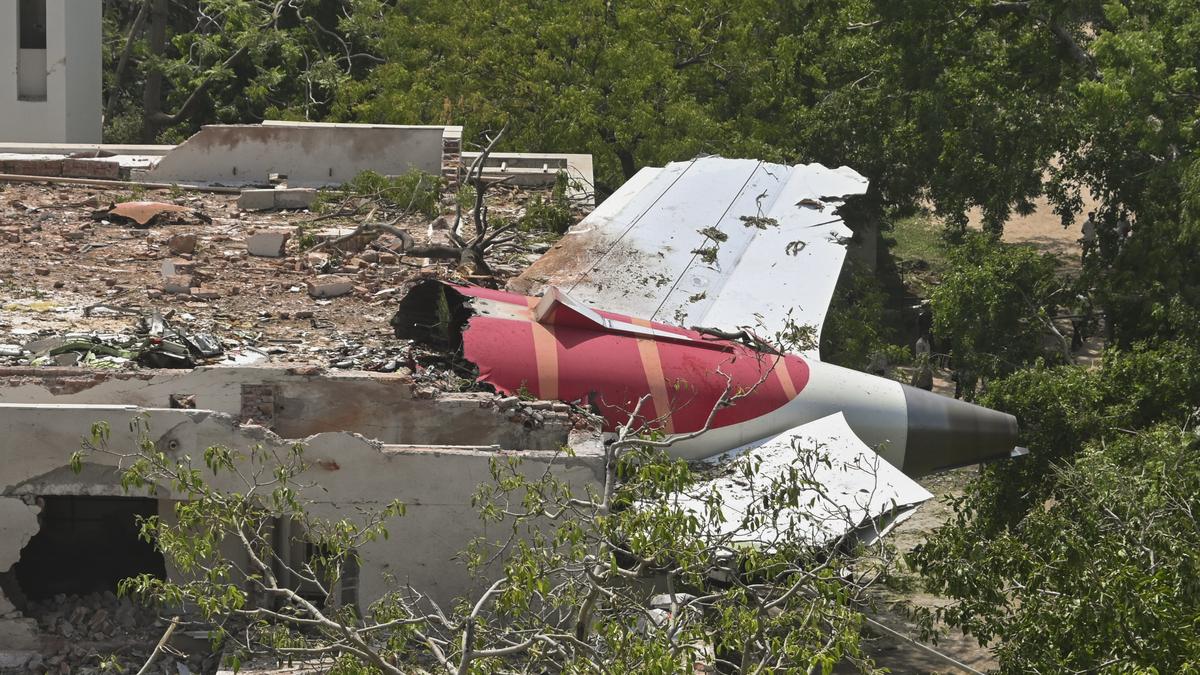Boeing 787 Dreamliner – Air India Ahmedabad-London Crash

Boeing 787 Dreamliner – Air India Ahmedabad-London Crash
Context:
On June 12, 2025, an Air India Boeing 787-8 Dreamliner (AI 171) crashed shortly after take-off from Sardar Vallabhbhai Patel International Airport, Ahmedabad, en route to London. The aircraft carried 242 passengers; over 200 fatalities have been reported. This incident is India’s deadliest aviation accident in recent years, raising safety concerns around the Boeing 787 Dreamliner globally.
Aircraft Overview:
- Type: Boeing 787-8 Dreamliner
- Capacity: 248 passengers
- Engines: General Electric GEnx-1B / Rolls-Royce Trent 100
- Range: 13,530 km
- Features: 25% fuel efficiency improvement, 186 ft length, 197 ft wingspan
- Introduced in Air India’s fleet in 2011
History of Issues:
- Multiple incidents globally, including engine, gear, flap malfunctions, cabin pressure drops, and battery issues.
- Air India 787 fleet faced 136 minor glitches within 14 months of launch.
- Notable past incidents:
- Dec 13, 2024: AI-113 reported hydraulic leak in nose gear en route to Birmingham.
- Windshield cracks, engine series issues, non-retracting landing gear, and cabin pressure drops reported repeatedly.
- Global context: Japan Airlines and United Airlines grounded 787s due to fuel leakage and battery malfunctions.
Boeing Whistleblower Allegations:
- Boeing engineer Sam Salehpour (Jan 2024) alleged manufacturing shortcuts, including unfilled fuselage gaps, risking aircraft lifespan and safety.
- Allegations prompted FAA investigation; previous similar complaints (2021) led to temporary delivery halts but no grounding.
Consequences & Response:
- Financial impact: ₹60 lakh/day for substitute aircraft, ₹1.43 crore/day in financing & pilot costs.
- Boeing issued a modification package, including software and component upgrades, requiring 10-day maintenance grounding.
- The DGCA continues investigation into crash and prior maintenance records.
Strategic Implications:
- Aviation Safety & Regulation: Highlights need for stringent oversight on aircraft manufacturing, maintenance, and regulatory compliance.
- Fleet Management: Stresses importance of proactive safety audits, real-time monitoring, and contingency planning for airlines.
- Global Aviation Policy: FAA and DGCA investigations may influence international Boeing 787 operations.
- Public Trust: Such accidents impact passenger confidence, insurance costs, and bilateral aviation agreements.
Policy & Governance Relevance:
- Civil Aviation Safety: Reinforces the role of DGCA and FAA in enforcing safety standards and incident reporting.
- Consumer Protection: Passengers’ rights, compensation, and timely dissemination of safety information are critical.
- Manufacturing Oversight: Raises accountability for global OEMs and emphasizes adherence to quality assurance protocols.
Conclusion:
The Air India 787 crash underscores persistent technical vulnerabilities in the Dreamliner fleet, the necessity of robust regulatory supervision, and the importance of global aviation safety coordination. The incident serves as a case study in aviation governance, industrial accountability, and disaster preparedness.
Updated - June 14, 2025 10:19 am | The Hindu